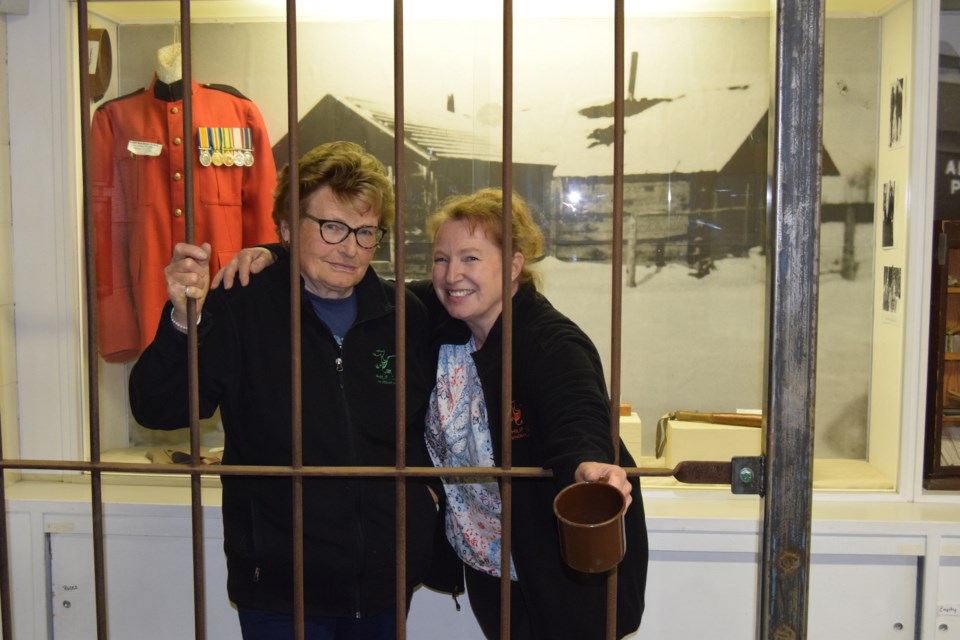BARRHEAD-The Barrhead Centennial Museum has a new display called Women and the War Effort. The question is when the public will have a chance to see it.
Barrhead and District Historical Society president Anna Churchill said she hopes the answer is sometime this summer.
However, that will not only be up to the province and the public health restrictions, but their board members who have not had the chance to meet in person since August.
The board had planned to meet in November, but due to COVID-19 public health restrictions and the board's comfort level over meeting in person, they delayed the meeting until April 1, which now has been postponed until the end of the month and will serve as the society's annual general meeting. Because the board, consists entirely of seniors who are not technology-minded, they have chosen not to meet via videoconferencing.
Churchill said one of the few benefits of COVID-19 is that it has allowed her and her daughter Barbra to examine the displays more closely. The museum's doors have been closed to the public since the end of the 2019 summer.
One of the things they found is that many of the artifacts belonging to many of the displays had little connection to the community or the era they were trying to depict.
For example, she said when they were going over the history of the law enforcement display, they found many of the items were not from the region.
"There were items there from the US," Churchill said. "We also discovered that nothing in our First World War display pertained to WWI."
She also noted that the museum's Second World War display, while having artifacts from that war, has been relatively unchanged for 50 years and that it focused on the exploits of men and their military effort.
"I woke up one day and had an epiphany. Since we were going to have to revamp our war displays anyways, let's focus on women and the war effort," Churchill said.
And that is what she and Barbra have done with the creation of the new display.
"We had no shortage of artifacts and it was so interesting talking to the people who were in it and their relatives ... we just enjoyed the whole process of putting the display together," she said.
The display also marks the second major change they have made in the museum in the last year that the public hasn't been able to appreciate.
Last summer, the museum changed its school display, featuring Barrhead's black community in the early 1900s, most notably a Jim Crow school built in the 1920s in Campsie.
Jim Crow (named after a black minstrel show) refers to a series of laws that legalized racial segregation. As part of the reorganization, everything related to the old Barrhead School District was moved to the museum, including a desk, an organ and a trophy from J.R. Harris from Craven School. Thee is also a butterfly from Lorne Jenkin. Harris and Jenkin were pioneering teachers in Barrhead.
"Jenkin always walked around with a butterfly. I am hoping that one day we will find out the story why," Churchill said.
Barrhead Composite High School, at one time, was named after Jenkin and the junior high wing of the school currently sports Harris' name.
Churchill added they are also working on updating Hall C of the museum, which they will use to display historical, working musical instruments.
"We have a fiddle from Manola that was made from a log floating in the Pembina River in the 1920s," she said.
Because of the research and care needed to display an item, the work involved in updating or changing a display is slow going, but she is confident that the public will appreciate their efforts.
But the question is when that will happen. When the government first lifted public health restrictions that allowed museums to open, the board decided against it, partly because of the age of their volunteers, who are mostly seniors, and were hesitant to put themselves at potential risk of being infected by COVID-19.
The other reason is that the protocols required to open for physical distancing and the cleaning protocols put in place were too onerous.
And although Churchill said the board members and volunteers might feel better about volunteering due to the province's vaccination rollout, the cleaning protocols may prove to be the sticking point, Churchill said.
"Some museums have no problems because everything is roped off and the public isn't allowed near the displays," she said. "But in our museum, where everything is clustered, if you try to clean artifacts that they might have touched, it would be beyond our capability. The Alberta Museums Association has strict cleaning protocols. We have every type of item and material in the museum and they all have to be cleaned differently. We could do it by appointment only, but we are so small, I don't think we would have the manpower."
Barry Kerton, TownandCountryToday.com


